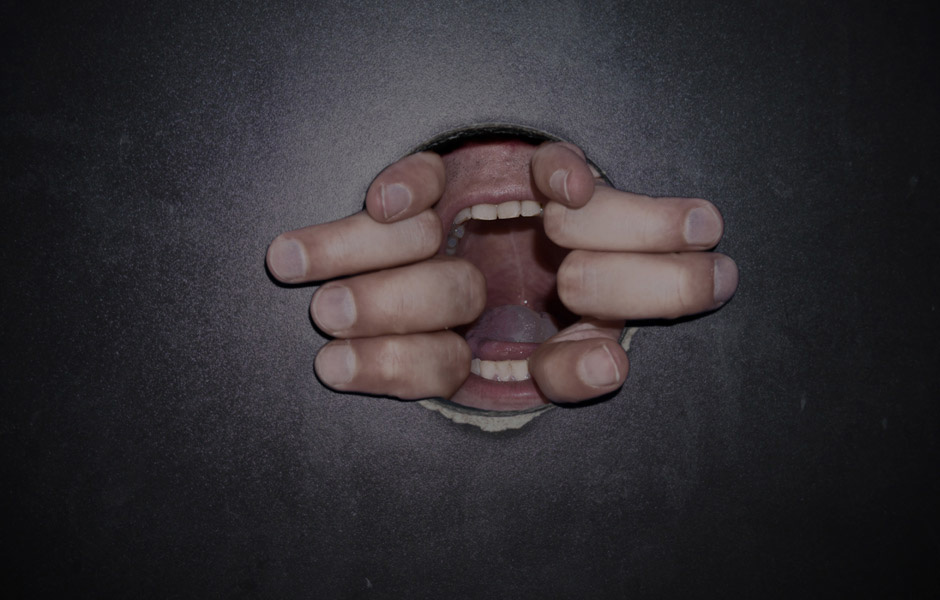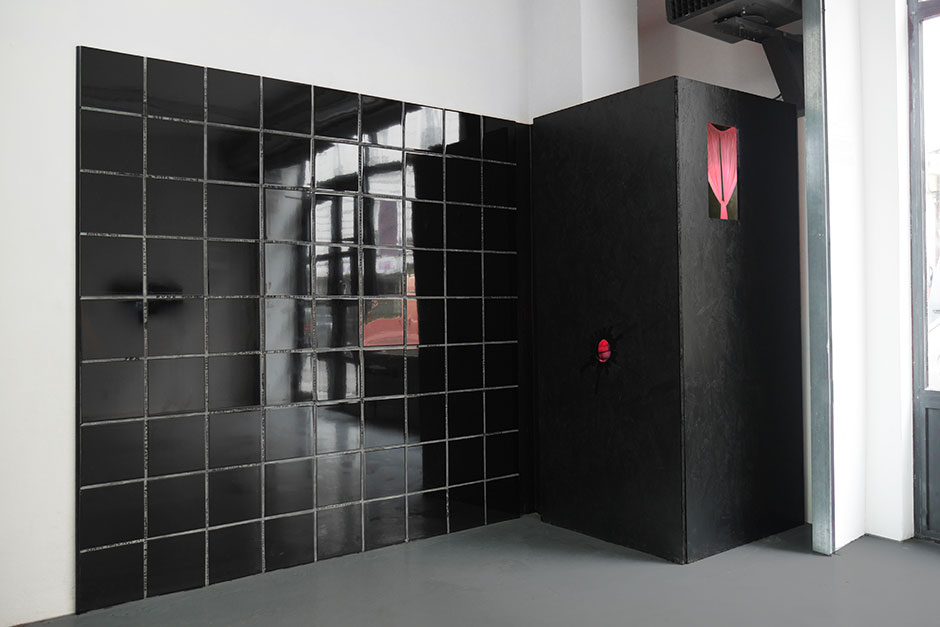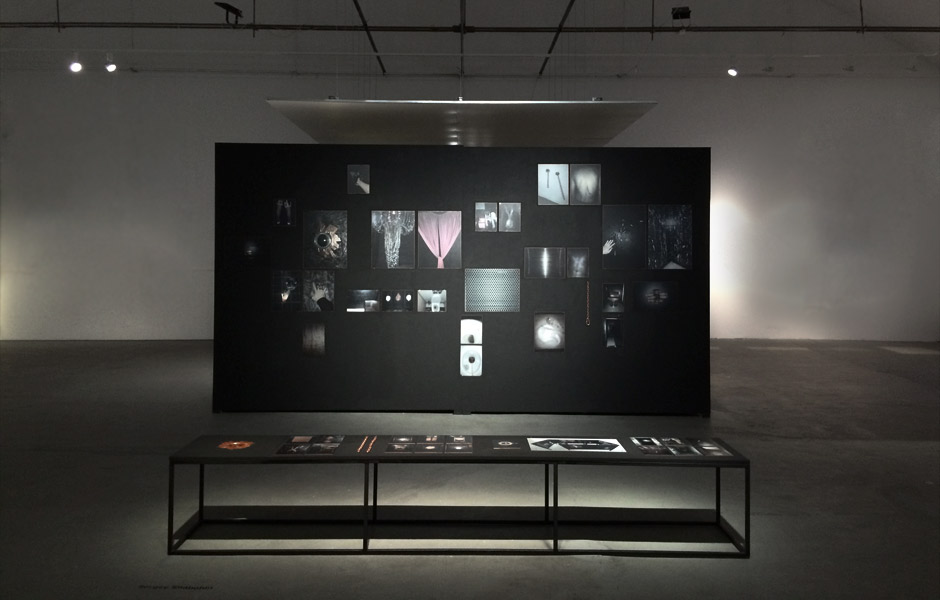Fear of Castration cycle:
ID: C8

Date:
Since 2016
Introduction:
This is the second part of a queer trilogy confronting conservative patriarchal society in Belarus and Poland with the culture of the queer community. The cycle seeks to critique official Belarusian culture through a paradoxical confrontation with the gay sex subculture. The cycle creates total installations that reveal the fears of the official culture and ideology in relation to the "filth" of LGBT subcultures. The installation is filled with photographs depicting the interiors and details of darkroom spaces found in gay clubs and bars in Warsaw in 2016. In addition to the collected photo archive, the installation includes the slogan "White culture is afraid to look into a black hole." The installation's “black cube” is framed in the "white cube" of the gallery space as a dark room, a labyrinth, or a chamber of horrors. The installation is opposed by the specific aesthetic dialect of "black rooms" against the ruling "white" (here = official Belarusian and Polish) culture, which, according to the artist, should stop being afraid of marginal aesthetics and thus overcome the "fear of castration".
Works and events within the cycle:
2019:
Fear of Castration:
Darkroom-Labyrinth
W64.1
︎ technical info
Installation
For group exhibition We Will Not Change Our Show, Brno House of Art, Brno, Czech
Includes fragment of cycle Zones of Repression
Installation
For group exhibition We Will Not Change Our Show, Brno House of Art, Brno, Czech
Includes fragment of cycle Zones of Repression
The installation is devoted to the fears of the dominant official culture and ideology, both in Poland and in Belarus; their horror of the ‘filth’ of the LGBT subculture. The photographs show the interiors of gay clubs and bars in Warsaw. The installation sets the specific aesthetic dialect of ‘dark rooms’ against the sterile, patriarchal dominant culture, which, according to the artist, should stop being scared of the aesthetics of the margins, and in this way overcome the titular ‘fear of castration’.
The labyrinth includes the installation Zones of Repression. Like in other countries, gay men in Belarus leave their messages on the walls of public toilets. However in Belarus all public spaces, including toilets, are cleaned until they shine. Therefore, people write messages to each other with small inconspicuous letters on the fugues between the tiles. The installation presents a collection of these hidden inscriptions, that are not only proposals of sexual nature; subcultural remarks, political opposition statements, and expressions of homophobic and racist aggression can also be found among them.
This installation is an image of public space in Belarus: everything that differs from the norms is pushed into the hidden zones. These seams, according to the authorities, are covered with mud, but for the artist they are a symbol of freedom. Let all the tiles be cleaned until they shine, let all the abnormal statements be pushed to the seams - in the end we see the grid as an image of direct social ties, and as a skeleton of society.
The labyrinth includes the installation Zones of Repression. Like in other countries, gay men in Belarus leave their messages on the walls of public toilets. However in Belarus all public spaces, including toilets, are cleaned until they shine. Therefore, people write messages to each other with small inconspicuous letters on the fugues between the tiles. The installation presents a collection of these hidden inscriptions, that are not only proposals of sexual nature; subcultural remarks, political opposition statements, and expressions of homophobic and racist aggression can also be found among them.
This installation is an image of public space in Belarus: everything that differs from the norms is pushed into the hidden zones. These seams, according to the authorities, are covered with mud, but for the artist they are a symbol of freedom. Let all the tiles be cleaned until they shine, let all the abnormal statements be pushed to the seams - in the end we see the grid as an image of direct social ties, and as a skeleton of society.
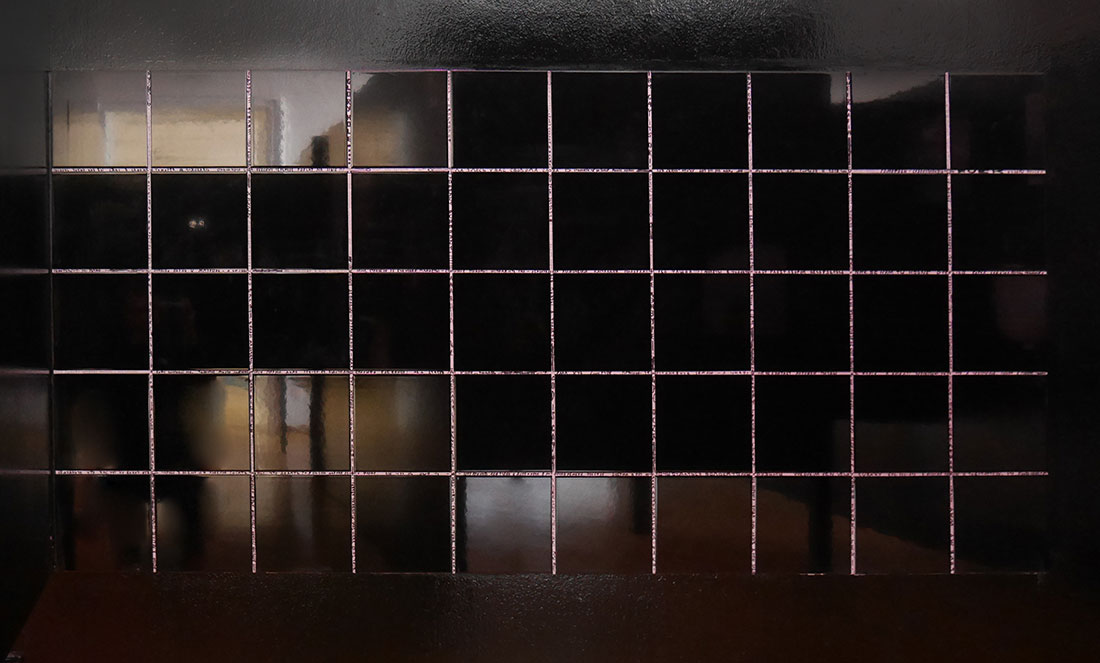

Fragment of cycle
Zones of Repression
Zones of Repression
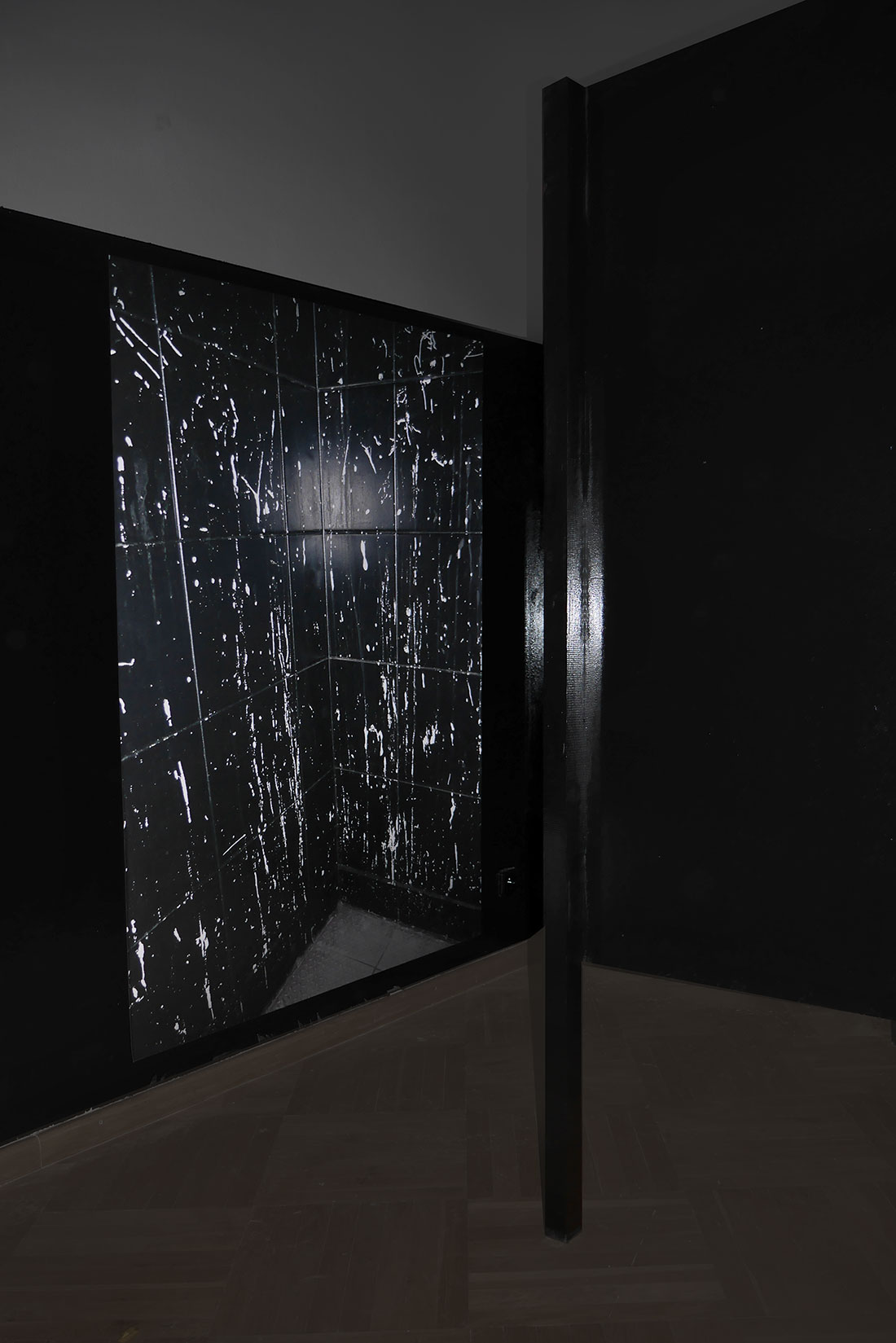


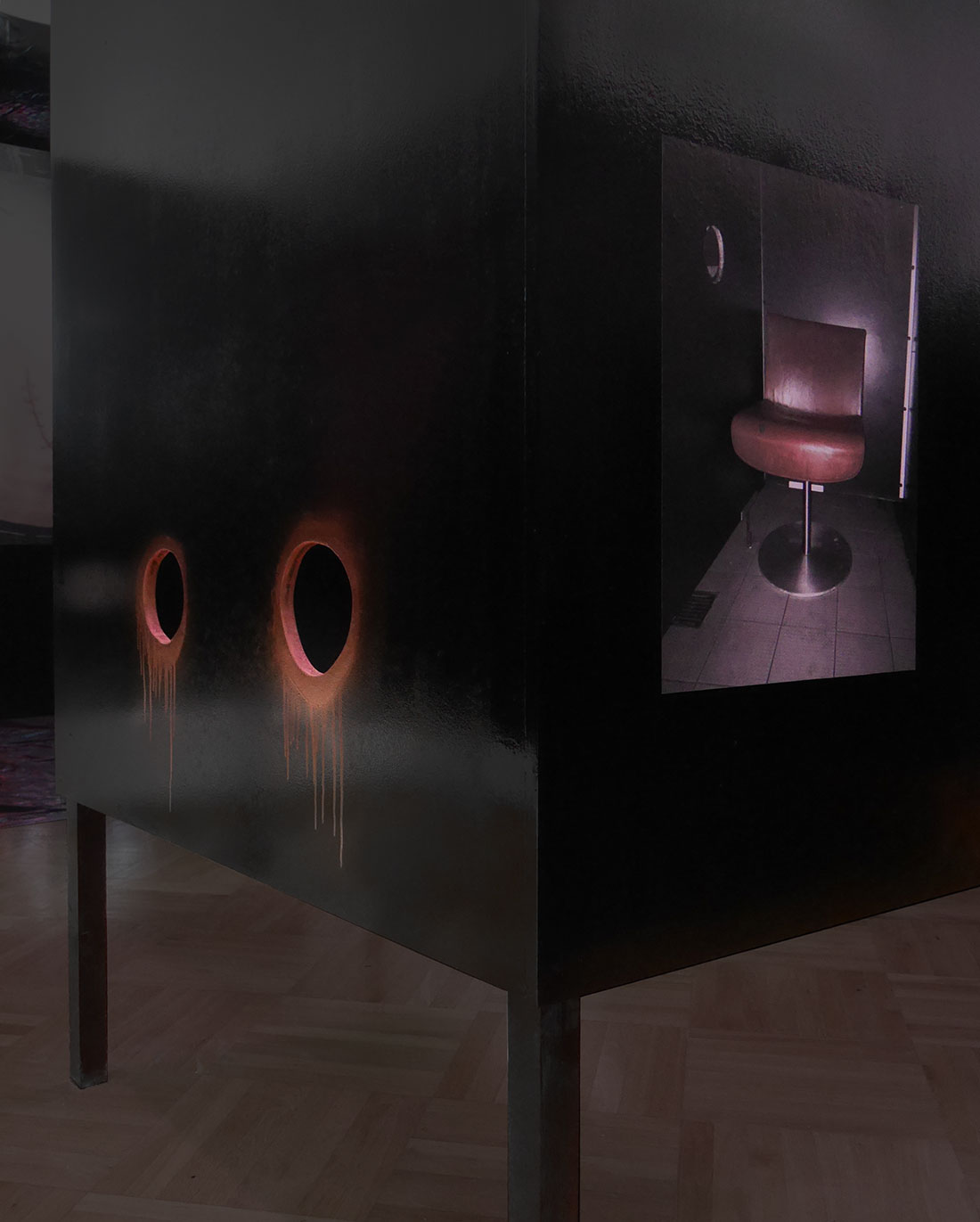


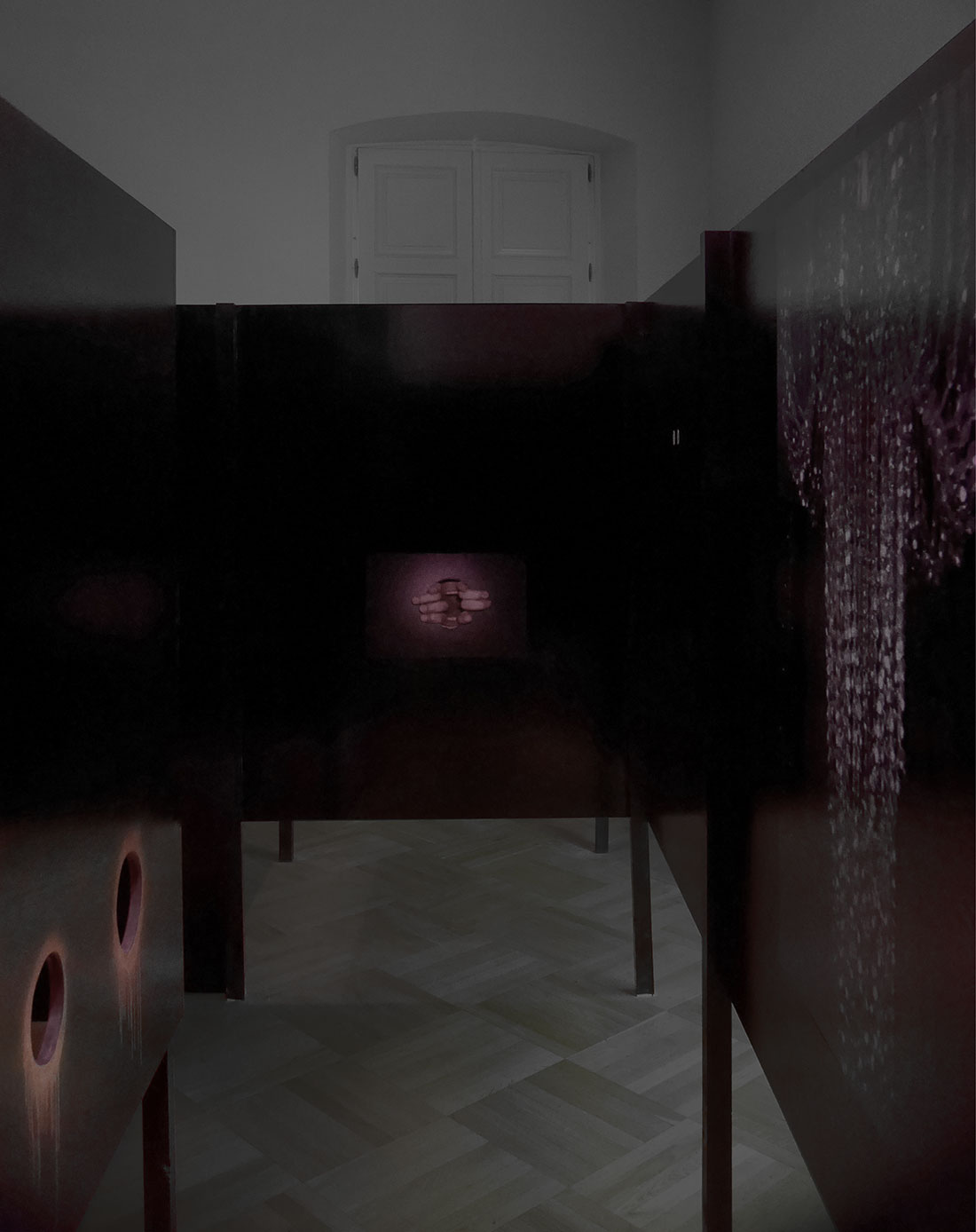
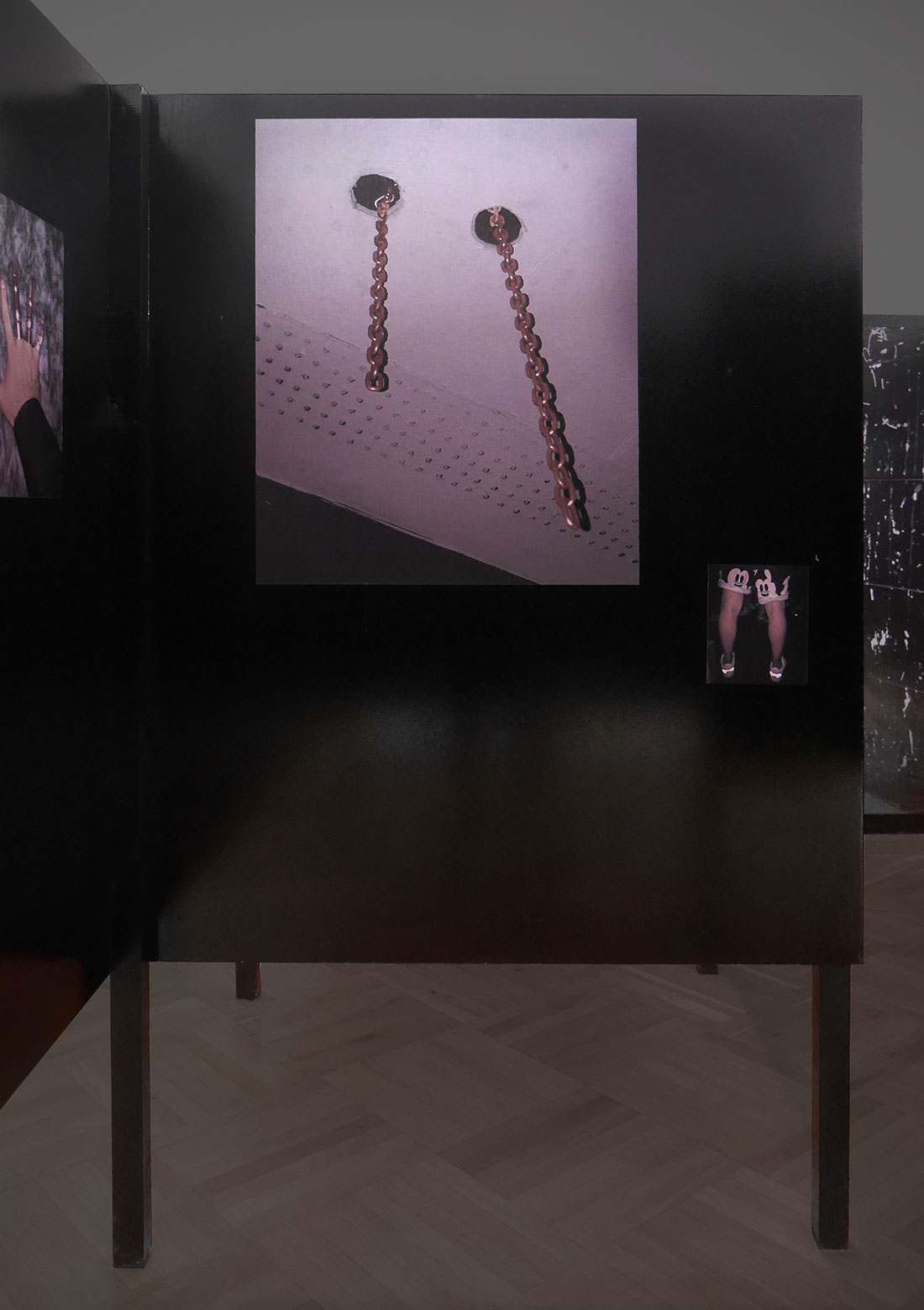
2018:
Fragment of
Fear of Castration
in Paris
W43.4
︎ technical info
Installation
For group exhibition Los Atravesados, Treize gallery, within Queer Week festival, Paris, France
Includes fragment of cycle Zones of Repression
Installation
For group exhibition Los Atravesados, Treize gallery, within Queer Week festival, Paris, France
Includes fragment of cycle Zones of Repression
Fragment of the design and slide show documentation on the screen in the Paris gallery Treize within Queer Week festival. The second part of the installation from the Zones of Repression (or Displacement Zones) cycle.

2016:
Fear of Castration
in Lublin
W43.2
Version of the Minsk installation in Lublin
2016:
Fear of Castration
in Minsk
W43.1
The total installation Fear of Castration is devoted to the fears of the dominant official culture and ideology, both in Poland and in Belarus; their horror of the “filth” of the LGBT subculture. The installation is full of photographs showing the interiors and detailing the space of darkrooms found in gay clubs and bars in Warsaw. In addition to the collected photographic archive, the installation is completed by the slogan A White Culture is Afraid of Looking into a Black Hole. The “black cube” is built in the “white cube” of the gallery space as a darkroom, a changing room, or a room of horrors. The installation set the specific aesthetic dialect of “black rooms” against the ruling “white” (here = official Belarusian) culture, which, according to the artist, should stop fearing the aesthetic of the margins, and in this way overcome the titular “fear of castration”.


